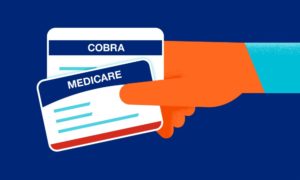Navigating Medicare and Railroad Retirement Benefits

Understanding how Medicare enrollment works with railroad retirement benefits can be a daunting task. Fortunately, Plan Medicare provides a wealth of information to help you navigate the enrollment process and ensure you receive the health coverage you need. This article will guide you through the ins and outs of Medicare enrollment as it relates to railroad retirement benefits, offering insights into key concepts, important dates, and frequently asked questions. Let’s dive in!
Medicare and Railroad Retirement Benefits: An Overview
Understanding the Basics
Before delving into the specifics of Medicare enrollment and railroad retirement benefits, it is essential to understand what each program entails. Medicare is a federal health insurance program designed for individuals aged 65 and older, certain younger individuals with disabilities, and people with end-stage renal disease. The Railroad Retirement Board (RRB) is a federal agency that administers retirement, survivor, and disability benefits for railroad workers and their families.
How Enrollment Works?
When it comes to Medicare and railroad retirement benefits, the enrollment process is generally automatic. If you are receiving railroad retirement benefits, you will automatically be enrolled in Medicare Part A and Part B when you turn 65. However, there are certain steps you must follow and decisions to make during the enrollment process, which we will discuss in detail in the following sections.
Understanding Your Medicare Coverage Options at Plan Medicare
Original Medicare
Original Medicare is composed of two parts: Part A (hospital insurance) and Part B (medical insurance). These cover hospitalization, skilled nursing facility care, hospice care, and some home health care (Part A) and medical services like doctor visits, outpatient care, medical equipment, and preventive services (Part B).
Medicare Advantage
Medicare Advantage (Part C) plans are an alternative to Original Medicare. Offered by private insurance companies, these plans provide all the benefits of Part A and Part B, and often include additional benefits like dental, vision, and prescription drug coverage.
Part D Prescription Drug Plans
Part D plans offer prescription drug coverage and are also provided by private insurance companies. You can enroll in a stand-alone Part D plan if you have Original Medicare or a Medicare Advantage plan that doesn’t include prescription drug coverage.
Key Dates for Medicare Enrollment and Railroad Retirement Benefits
Initial Enrollment Period
The Initial Enrollment Period (IEP) is a seven-month window that begins three months before your 65th birthday, includes your birth month, and ends three months after your birth month. During this time, you can enroll in Medicare Part A, Part B, Part C, or Part D.
General Enrollment Period
If you missed your IEP, you can sign up for Medicare Part A and Part B during the General Enrollment Period (GEP), which runs from January 1 to March 31 each year. Coverage will begin the following month after you sign up, and you may have to pay a late enrollment penalty.
Special Enrollment Periods
Special Enrollment Periods (SEPs) allow you to enroll in Medicare outside of the IEP and GEP under specific circumstances, such as losing employer-sponsored coverage or moving out of your plan’s service area.
FAQs About Medicare Enrollment and Railroad Retirement Benefits
Do I need to enroll in Medicare if I have railroad retirement benefits? Yes, if you are eligible for Medicare, you should enroll in Part A and Part B when you turn 65, even if you have railroad retirement benefits. Your Medicare coverage will work alongside your railroad retirement benefits to provide comprehensive healthcare coverage.
Can I enroll in a Medicare Advantage plan if I have railroad retirement benefits? Yes, you can choose a Medicare Advantage plan instead of Original Medicare. Just be sure to compare the benefits, costs, and network providers of each plan before making a decision.
How do I pay for my Medicare Part B premium with railroad retirement benefits? If you have railroad retirement benefits, your Medicare Part B premium will be automatically deducted from your monthly benefit payment. You don’t need to take any additional action.
Are there any additional benefits for railroad retirees when it comes to Medicare coverage? Railroad retirees and their families may be eligible for additional benefits, such as coverage for occupational illness or injury under the Federal Employees’ Compensation Act.
Navigating Medicare enrollment alongside railroad retirement benefits can be complex, but Plan Medicare is an invaluable resource for understanding your healthcare coverage options. By familiarizing yourself with key concepts, important dates, and frequently asked questions, you can make informed decisions about your Medicare coverage and ensure you receive the comprehensive healthcare you need.
Remember to visit Planmedicare.com for more information and to find answers to your specific questions about Medicare and railroad retirement benefits. With the right information and guidance, you can confidently navigate the world of Medicare and enjoy the peace of mind that comes with having comprehensive health coverage. As always reach out to speak with a local agent at Plan Medicare to get your personalized Medicare education.






